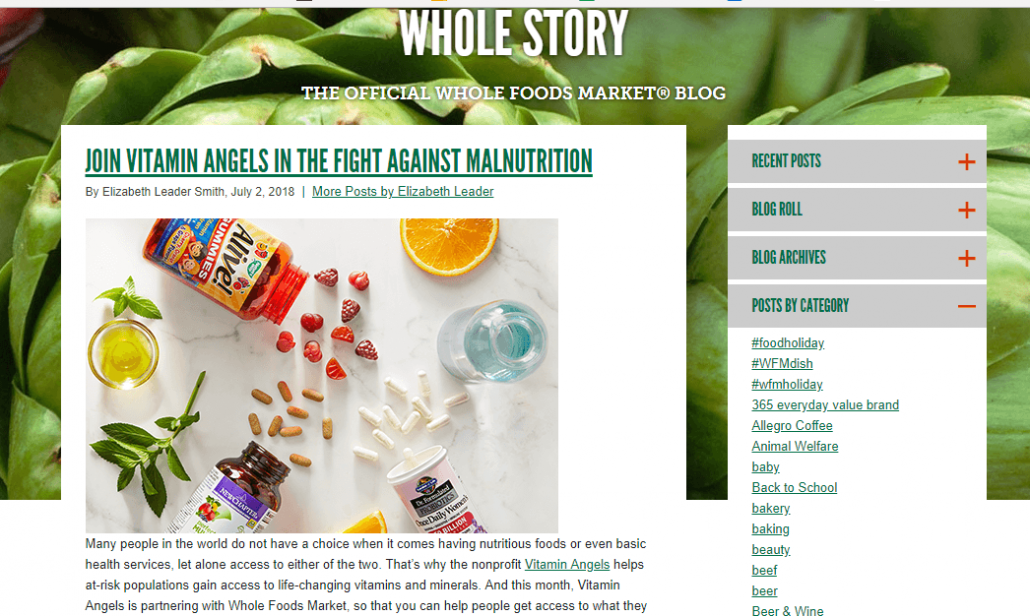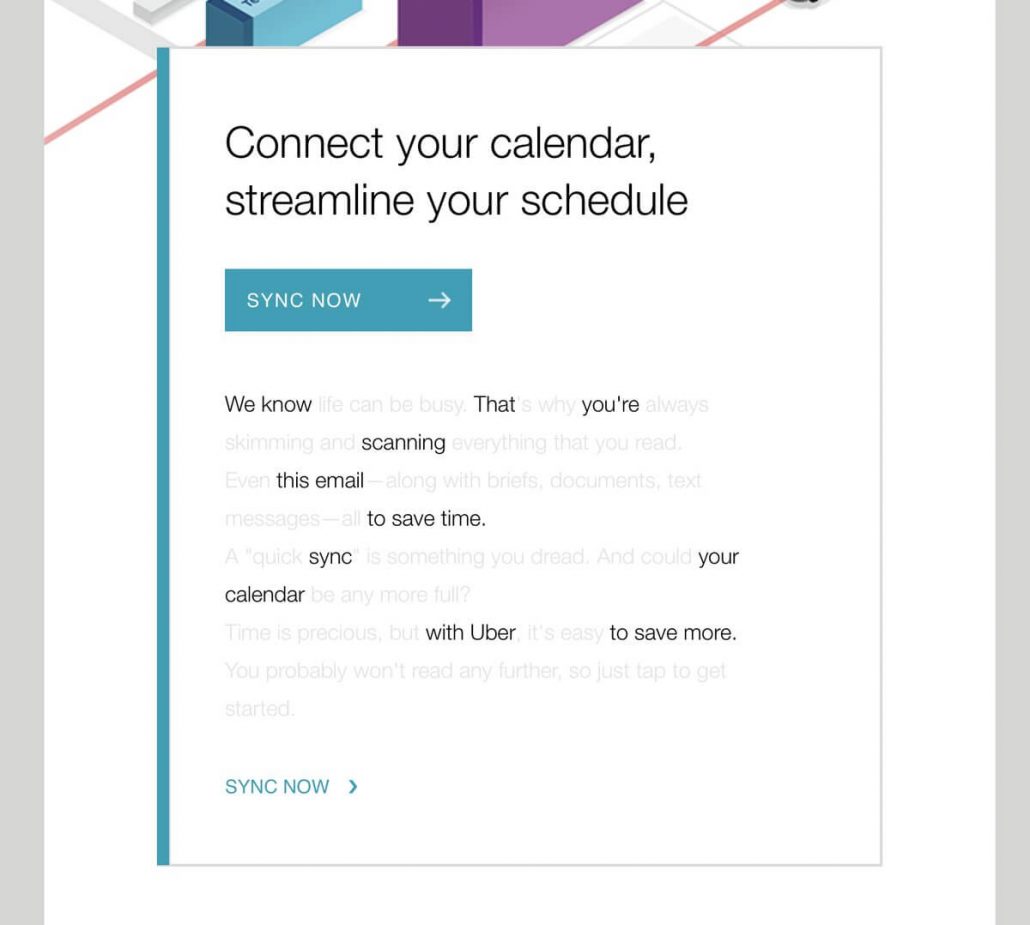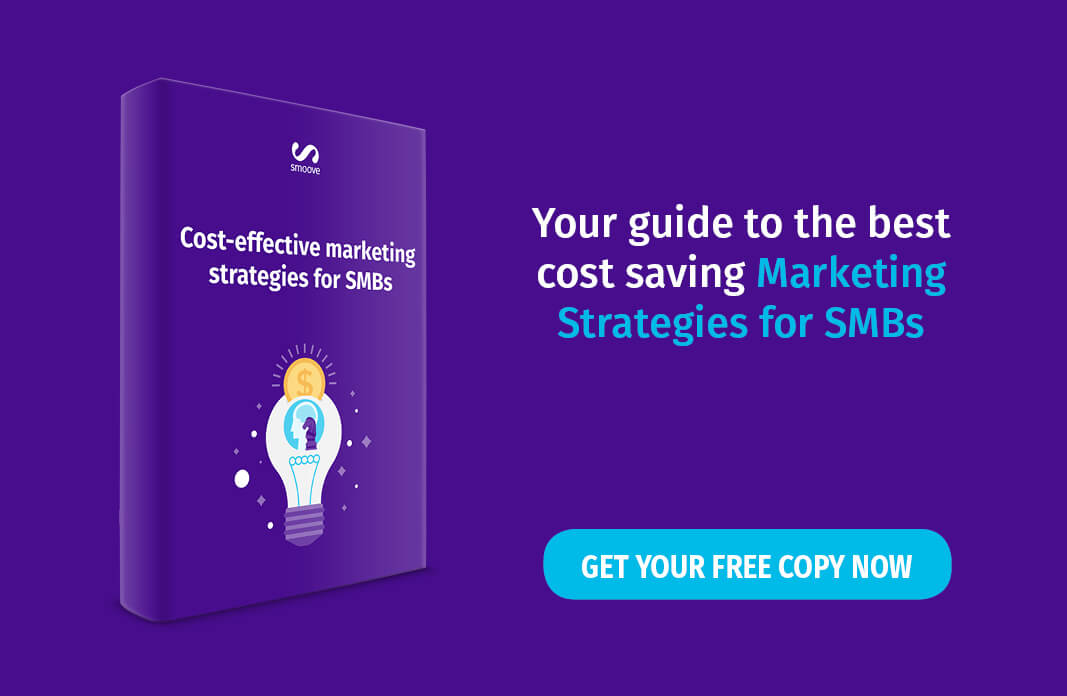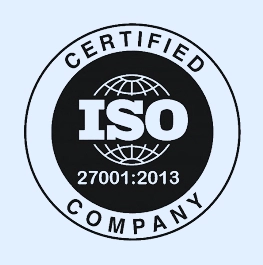There are countless examples of marketing strategies that SMBs can employ to draw in more customers and improve their bottom line. The success depends on a number of factors, ranging from the customers and their habits, to the work you’re doing and how you’re approaching it.
Here are three of the best marketing strategies and tactics for small and medium-sized businesses, which won’t break your bank but can still provide stellar results;
1. Run a blog
Blogging is one of the most important tools businesses use to improve their marketing and establish themselves not only as sellers, but also as experts in the field. A business blog is a central point of your content marketing and your own piece of mind to share across the social media pages, newsletters, emails, ebooks and other channels of communication you may have.
Why should you run a blog?
It gives your business a voice
A blog is a place to talk about the company products and services, but also a channel to touch on the new developments in the industry and discuss marketplace news. It gives your business a “personality” and gives your customers confidence that you are experts in the field which all builds your brand.
It helps in reaching new customers
With strategically crafted, interesting and useful blog posts, you are able to reach many people and get your content shared across different social media channels they use. Also, its dynamic nature with frequent updates helps you achieve higher internet search results rankings, which is one of the ultimate goals of content marketing efforts.
It gives your business more exposure
Blog posts are not only to be shared on your own marketing channels. You and your team should give an extra effort to share the blog content across, for example, LinkedIn groups related to your field of business. This is how, along with reaching new customers, a blog can also help you build a dynamic community which exchanges information, opinions and reviews of your business and products.
It drives customer engagement
A blog creates a two-way conversation with your prospects and existing customers and encourages comments, interaction and feedback. By regularly engaging with your customers via a blog, you can truly improve the customer experience and increase their trust in your brand. If customers believe you’re a reliable source of industry information, they will buy from you as well.
How to run a successful blog?
#Add value and be original
Adding value to your content is the one thing that will keep your customers coming back for more and in the end – buy from you. Be aware that there are other blogs out there probably writing about the same things, so find your niche and your brand voice so you can be consistent and original. Nurture your own perspective and creativity and the customers will recognize it.
#Post regularly
Make sure you maintain a certain dynamic and post regularly. Depending on your business, this is ideally once or twice per week. Speaking of length, as practice (and Google ranking!) shows, blog posts should be between 800 and 1,200 words long. Blog posts over 2000 words are considered niche, so be careful and post these less often.
#Structure smartly
Structure your blog smartly. Craft a great headline with an active verb and try to use the topic keywords in it. Don’t forget sub-headlines, bullet points and interesting images/helpful videos related to the topic. Your blog fuels SEO, so don’t forget to develop your keyword strategy. A single search term as a keyword is not as effective anymore, and companies now employ so called “topical search” which includes search phrases, synonyms, and other topic-related terms users might enter in their browser. Include stats and both external and internal links in your blog post as it gives your business and your blog more credibility.
#Promote via different channels
Promote your blog across Facebook, Instagram, Twitter, LinkedIn and other social media you use. Include links to your blog posts in your newsletter offers and other marketing content you produce such as ebooks.
To consistently create great content and keep a customers interested in it, you need to tie your blog to your company image in an innovative way. To find out how this looks in practice, let’s take a look at Whole Foods, which has one of the most popular company blogs in the food industry.

Their blog, Whole Story, concentrates not only on the products they sell, but also on the eating culture and healthy lifestyle. Knowing that their customers are heavily invested in eating healthy, the company creates different articles related to the topic and provides a lot of value to the readers.

This is how their customers can learn more about food safety or how to grow their own food, but also find out more about food festivals, healthy diets and get some new recipes.
2. Run email marketing
Email marketing is considered to be one of the most affordable and most effective marketing tools in the world of advertising. Regardless of how many new and technologically advanced ways we have to reach customers in 2018, email still stands as one of the most direct and cheapest marketing channels.
Why should you run email marketing?
It’s cheap
Email marketing is considered to be cheapest channel of communication within the world of business. It brings efficiency to multiple levels of your business: it can be sent automatically to different groups of customers you may have, it can be integrated with your shopping cart technology to further engagement, and it allows you to increase frequency and relevance of communication with your customers. These levels of marketing and communication cannot be replaced with other strategies at the same cost.
It can directly reach many customers
If you segment your customer’s database and automate your emails wisely, you can reach different groups of customers with timely, strategically crafted content based on their exact needs and interests. This significantly builds the relationship you have with your buyers and increases your sales.
It increases brand visibility
You cannot force your customers to visit your stores or your website to make a purchase. But with a simple, timely email you can remind them you’re still here and stay on top of their mind in the crowded marketing landscape.
This also means that you can deliver the email when it will have the biggest impact. Adjusting the timing of your emails helps you deliver relevant messages at relevant times such as, for example, a newsletter with a 20% discount coupon one week before holidays.
How to run a successful email marketing campaign?
#Develop a strategy
Every marketing campaign needs a business strategy plan, so always take time to develop one. Think about what you want to achieve with a certain campaign: Is to grow your revenue? Is to retain your existing customer or convert a new ones? After finding your answer, think about what value to add to it and find an original and creative way to execute it.
#Segment effectively
Marketing automation tools can help you effectively segment your customers based on their interests, demographics, recent open or link click activity, purchase history, subscription date and more. Email segmentation is a powerful marketing technique which helps you send relevant offers to specific buyers in an email list.
#Personalize
Email personalization is based on the same parameters as those used in customer segmentation. These can be your customers’ previous purchases, buying preferences, website browsing data and other information you collected in their buying process.
Create an email your customers will want to read. Include the customer name in your subject line and/or the first line of the email and make a step forward and create personal content based on mentioned parameters. Make every word count and the results will be remarkable.
#Automate
Setting up your emails so that they get sent automatically when certain triggers are activated is one of the most successful email marketing tactics. These triggers can be the day of your customer’s first registration or their first purchase, their birthdays or public holidays. Automated email campaigns are proven to be very successful in engaging target audiences, increasing email open rates and also transaction levels and revenue.
Similar to what we said before, to run a successful email marketing campaign means to be consistent in aligning it with your brand image. One of the best company examples is Uber. All of its communications and marketing assets tell the brand’s story in a simple and clear way.
For the purposes of their Calendar Integration campaign, Uber sent a simple but beautifully designed email with a clever copywriting.

With a brief initial description and a very clear CTA, Uber designed the email which is hard to miss, ideal for people who are quickly skimming their emails.
3. Run SMS marketing
In 2018, SMS marketing remains one of the most important channels of digital marketing. SMS is great way to get in touch with your customers as it doesn’t depend on an internet connection, can be used to reach anyone with a mobile phone and it’s incredibly fast. This is how SMS marketing campaigns managed to stay an integral part of digital marketing and found their way to become one of the fastest growing marketing channels in the world of business.
Why should you run SMS marketing campaigns?
It’s an instant marketing solution
Text messaging enables you to reach your customers anyplace and any time with personalized messages sent directly to their phones. SMS doesn’t require a lot of prep-time, it’s short, concise and has no additional materials attached to it. It brings clear and valuable information to your customers, such as a sale, temporary discount, reward for loyal customers, promotion of a new product or product delivery details.
It’s cost-effective
Compared to other marketing solutions and paid advertising, SMS marketing is considered to be very affordable. This makes it an ideal promotion channel for every business out there, even for those with a limited marketing budget.
It’s ideal for time-sensitive offers
People walk around with mobile phones in their hands all the time, so SMS is the best known tool for delivering time-sensitive marketing offers you may have. SMS is the best option to, for example, spread the word about the flash sale in your stores or to inform your customers about that special 24-hour holiday offer.
How to run successful SMS marketing campaigns?
#Keep it short and relevant
Have in mind that the space you have for the marketing offer is limited, so the message needs to be short, direct and concise. Make sure everything you want to say fits into one message and use a shortened URL to your website or landing page to add an extra value to your offer.
#Always include CTA
Even though it’s not a newsletter or a landing page, a marketing SMS also needs to have a clear Call-to-Action. This means there is no flashy and clickable CTA button, but you still have – words! Invite your customers to action in a few compelling words and make sure you actually…
#Integrate the SMS with other marketing channels
SMS is easy to integrate with other types of marketing you do. Although SMS is a marketing channel for itself, it’s often used to drive more customers to visit the company website or a web shop. One of the most frequent uses of SMS marketing campaigns is to enlarge customer databases by sending the URL to your mobile landing page.
Restaurant chain Pizza Hut recognized the marketing power of SMS years ago and it’s still using it as of one of the main channels of promotion for their products and services. Few years ago, a Pizza Hut SMS subscribers received a text message promotion with a link to custom order their next pizza with a discount.

Once an SMS subscriber clicked on the link in the SMS promotion, they’re taken to Pizza Hut’s mobile ordering experience and discovered another perk of this offer – a free appetizer!

Wrap Up – marketing strategies
Today’s marketplace is crowded with businesses offering similar products and services, so SMB’s are on the constant lookout for successful marketing strategies and expand their business without huge spending. This is mostly done via cost-effective, top marketing strategies such as content marketing, but also through innovative and data driven email and SMS marketing campaigns.
The secret of success is hidden both in creating original and strategy-specific content for each of these strategies, but also in segmenting your customer’s database and automating the marketing processes based on various customer’s information and data you collected.
Via smartly executed email, SMS and content marketing campaigns, you will be able to get more conversions, increase the loyalty and build stronger relationships with your customers.



